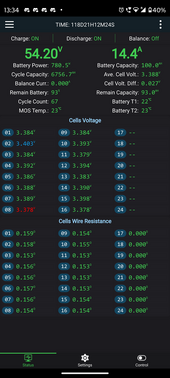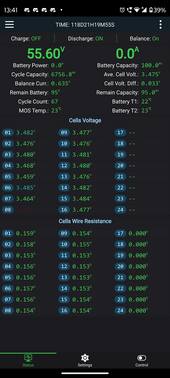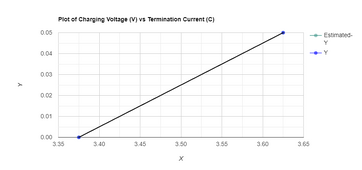Sorry for the late reply. The post got burried under other notifications. Yes i have measured inverter's charging voltage with a calibrated multimeter.
The answers are conflicting under this thread.
Simple! It is because they are unaware of true LFP charging behaviour.
How can one monitor the tail current and cut off charging? Via the bms? I have got further confused by the concept of charging now.
Here's the reality: When it comes to monitoring tail current and cutting off charging current, Most equipment built for lead acid batteries simply CAN'T. You are bound to get confused.
In most cases, it comes down to implementing a safe compromise with the hardware that you've got.
You can charge it with higher voltages like 3.5V (Or 3.65V) but you cannot charge it with 3.4V until current becomes zero?
Let's say if the lead acid charger is capable of 3.6V (14.5V) will it be worse than if it were only 13.8V?


Look at these two screenshots carefully taken roughly 7 minutes apart.
The first shows the battery at basically ~98% SOC still charging at voltages below 3.4 V/Cell. The second one shows the battery at 100% SOC shortly after cut-off (56.4 V @ 0.05 C).
I have the older JK BMS that shows 95% SOC when the battery is 100% charged. But you get the gist by looking at current going into the battery.
The takeaway is this simple:
Any charging voltage above ~ 3.37 V will in theory will fully charge a LFP cell.
The tail current for all voltages in the range (3.37 V to 3.65 V) is given by this handy graph.
Most charging hardware for lead acid can't implement cut-off charging AKA charge termination. So, you gotta compromize in some way.






